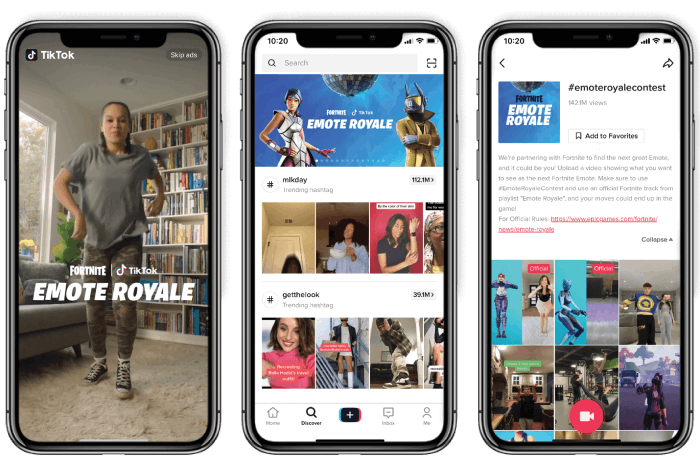Curated by TriMark Digital
Read Time: 11 Minutes
It’s go-time around the digital marketing industry – time for brands to apply their learnings from the last several months and start strong in 2022. TriMark Digital is mobilizing as well, and we’ve identified 10 trends that will define marketing success in the new year.
From navigating the age of privacy to creating hyper-personalized moments with your audience, we’ll cover everything you need to turn insight into foresight and get a leg up in Q1. Consider these key themes as you read:
- New privacy protections will make first-party data collection essential.
- Consistent UX optimizations will be key for page-one rankings in Google.
- Interactive experiences will help capture and engage a fast-paced audience.
- Brand authenticity will be a non-negotiable trust builder for prospects.
INTEGRATED MARKETING
A. Resurgence in Programmatic Advertising will level the playing field for all brands.
At the beginning of 2021, brands started purchasing more programmatically across TV, Search and social platforms.
And it makes sense given how immersive these channels have become. Now through a diverse mix of video, text and display ads, you can reach consumers with relevant, cross-device experiences at a lower cost – an attractive proposition for any brand looking to make their dollar go further in the new year.
Not only that, a “local first” shift in consumer behavior is creating a more level playing field where authenticity, not budget, is the currency. That means brands of all sizes can share genuine stories in front of the right audience without fear of being cannibalized by outside bids.
So, whether you’re a local mom-and-pop or a large enterprise, programmatic advertising should be on your 2022 agenda.
B. Consumers will reward brands that are genuine & transparent about their values.
54% of respondents to a 2021 study conducted by Washington University said that brands should take a stand on social issues, even if their audience disagrees.
While every issue requires sensitivity, it’s clear that genuine transparency is becoming a non-negotiable trust signal for today’s digital user.
In 2022, you’ll likely be faced with a decision to speak up or remain silent on a certain topic. Being honest and thoughtful in those moments could turn a casual passerby into a loyal customer.
A ‘local first’ shift in consumer behavior is creating a level playing field where authenticity, not budget, is the currency.
Dani Roberts, Director of Client Strategy
PAID SEARCH
Enhanced privacy restrictions will force brands to capture more first-party data.
Apple recently debuted its new App Tracking Transparency feature with iOS 14.5 (ATT), which allows users to consent before releasing their browsing activity to advertisers.
As users become more anonymous, first-party sources like consumer insights, campaign observations, CRM & sales data, etc. will be imperative to continue driving results with educated, data-driven optimizations.
In 2022, agencies and in-house marketing departments need to collaborate to gather and utilize this first-party data. It may feel like one step forward two steps back, but taking time now to create an efficient and scalable collection funnel will help you sustain performance as traditional data sources become more obsolete.
PAID SOCIAL
Platform-specific campaigns will be essential to mobilize your target audience.
The time has come for marketers to have a presence on more than just Facebook and Instagram.
New platforms are exposing people to different ways of consuming media, and brands will need to adapt their advertising to stay relevant in an increasingly diverse social landscape.
Take user-generated content (UGC). Made popular by the TikTok app, UGC is essentially any content that’s created by the person consuming it: the user.
TikTok’s partnership with Fortnite for the Emote Royale campaign is a good example of UGC at work. Together they launched a viral challenge whereby users submitted videos of their own Avatar dances for prizes (see below).
But rather than promote the contest with elaborate ads, Fortnite leveraged the UGC video submissions themselves because they fit the style of the app. In 2022, brands should follow suit with platform-specific content designed for the audience it’s reaching.
SOCIAL MEDIA
More brands will expand into new social platforms.
The next generation of apps and features in the social media space is helping carve out genuine opportunities to reach untapped audiences.
In 2022, brands will need to venture into these new frontiers beyond Facebook, Instagram and Twitter to stay relevant.
TikTok is a good place to start. Its user-generated style, robust creator studio and highly-intelligent algorithm come together to form one of the most frictionless in-app experiences on the market.
Yet despite having amassed over 1 billion users, there are very few brands on the app. That makes TikTok a virtually competition-free playground for engaging a passionate community. If you’re looking to push the envelope, give TikTok a shot.
ORGANIC SEARCH
Websites with the highest-quality user experience will continue to dominate in search results.
Google favors simple, yet for years, ranking on page one of SERPs has been anything but. Until now.
Thanks to the recent Page Experience Update, we enter 2022 with a measurable and attainable Organic roadmap. No more tricks for clicks or do-whatever-you-can-to-rank-on-page-one approach.
Instead, Organic success will be predicated on intuitive site structure, high-value content, exceptional UX and other user-first optimizations.
Organic success will be predicated on intuitive site structure, high-value content, exceptional UX and other user-first optimizations.
Conor Dalton, Senior Organic Strategist
USER EXPERIENCE (UX)
The digital experience will become even more realistic and human.
As consumers continue turning to digital outlets for real-world solutions, web experiences will need to become more human and interactive.
To stay ahead of the curve in 2022, brands should start exploring opportunities to recreate those traditional, in-person moments for a digital audience.
One way to create that authentic experience is online video. Webinars and live streams are ideal because they’re raw, unpolished and conversational. Augmented reality (AR) is another immersive tool to engage a digital-savvy customer.
WEB DESIGN
A positive first impression will be necessary to engage more users and increase time-on-site.
A quality first impression is critical for engaging today’s fast-moving digital audience. To capture and retain more visitors in 2022, brands should strive for low-friction, highly-scannable pages that streamline users toward their goal.
Start with the fundamentals: concise mobile-friendly copy, intuitive typographic hierarchy and plenty of white space.
Beyond the basic principles, brands can also include micro-interactions on their websites to spice things up. These small, functional moments between user and design create a positive first impression.
VIDEO
Full-funnel video content will become even more personalized.
Full-funnel storytelling will be essential to see results from video in 2022. To adapt, brands will need real-time insight into customers’ pain points at each stage of the buying process.
If one of those pain points is product education, a viable solution might be a series of thorough product videos to build awareness around the value of what you’re offering.
Or maybe you’re consistently losing business to competitors with lower price points? Prospects are more likely to convert into leads if they know exactly what they’re paying for and why. So, rather than shy away with product discounts, try creating an explainer video that clearly defines why your price is what it is.
New inbox privacy protections will change how brands measure email success.
Apple’s new Mail Privacy Protection (MPP) feature lets users hide their inbox activity, which means email senders will no longer have access to location and open data.
But don’t panic! These metrics help tell the story, but they aren’t the only indicators of campaign performance. To succeed with email in the new year, senders must look beyond opens.
For example, if the goal of an email is to drive traffic to a page on your website, you’ll measure success by how many people clicked through to that page (CTR). You can then use Google Analytics to see how many page sessions and conversions occurred as a result (just be sure to tag links to your site with correct utm parameters).
The key difference for email marketers in 2022 will be the type of data at your disposal. As open rates diminish, brands should begin optimizing emails with shorter, more action-oriented content and prominent, clickable moments.
By generating and acting on the right email data, you’ll be able to reach, engage and convert prospects without missing a beat.
INFLUENCER MARKETING
Influencer Marketing will become more data-driven than ever before.
New privacy updates are forcing brands to look to creators to reach their audience, but with more ad spend entering the space as a result, tracking return on the dollar is imperative.
In response, online influencer databases have started investing in cutting-edge A.I. tools that make it easier to find the right creator and assess their performance.
Social platforms are evolving, too. New in-app shopping features on Facebook, Instagram and TikTok mean new opportunities for prospects to convert and, in turn, new monetized touch points for advertisers to track.
In 2022, this actionable data will help brands leverage influencer marketing as a powerful lead-generation tool and side-step the fallout from privacy crackdowns.
Let’s talk 2022.
Ready to dominate the new year? Connect with our team today to get started.


















